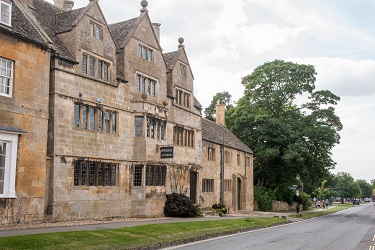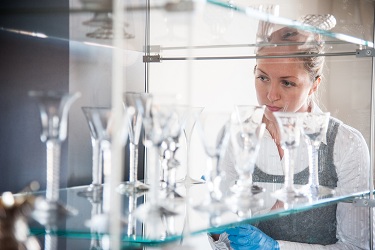The opportunity to work with Worcestershire County Council and other local stakeholders in order to transform the 17th century former coaching inn known as ‘Tudor House’ in the Cotswold village of Broadway into a new Museum – The Ashmolean Museum Broadway – came about thanks to Mr John Keil and his family. The Keil family owns ‘Tudor House’ and, since the 1930s, had based their world famous antiques business there. The business ceased operating in Broadway in 2008 and Mr Keil was eager to see the property gain a relevant new use and contribute to the local community in Broadway. And so he generously gave the Grade II* building on a free 50 year lease in order for it to be set up as an independent museum. A trust was created to run the new museum: ‘Tudor House Broadway Trust’ which involves trustees from the local community, Ashmolean Museum and University of Oxford.

The development of museum spaces is something that the staff of the Ashmolean Museum are well used to, whether it be permanent displays or temporary exhibitions. The Ashmolean in Oxford has over one million objects and has around 16,000 on display in over 50 galleries. The stores are designed to be easily accessed for teaching and research purposes, making all objects, on and off display, accessible. The Ashmolean team worked together to develop the displays for Broadway, selecting objects from the museum’s collections to display in the new museum.
Displays often stem from the collections and are curated following the stories within them that the curators want to communicate to the visitor. Once objects and content are collated, the design of the layouts is then developed. In this case, the historic house itself has its own history and stories. One option we could have followed would have been to recreate the rooms in the period in which it was built – the 17th century, and this has successfully been done by many other historic houses. However, this property has several centuries and layers of history, it would have been untrue to recreate any single period, since it had been a coaching inn, a school, working men’s club rooms, offices, private residence and an antiques dealership.

In order to tell the stories of the building using the breadth of the Ashmolean collections, the main interpretive theme that was laid out throughout the museum was chronological. This began with the 17th century, the first period of the house and also the century in which the Ashmolean itself was established – 1683. As visitors walk around the three floors of the property, it naturally becomes lighter, which lends itself to the ‘journey’ through the centuries. On ground floor, the building has dark wall panelling and the displays include delicate 16-17th century paintings from the Tradescant Collection and a Sheldon embroidery. The first floor is far lighter with no panelling on the walls, which means that the 18th century glass and silver is well lit and the beam structure of the building is also more prominent. The 19th century through to the 21st century are represented on the upper floor, which also has stunning stained glass windows and exposed beams in the roof.
The building itself underwent a major refurbishment physically in order to ensure all aspects of it were the highest museum standards. The work took several months and involved skilled contractors to install the electrical and security systems. Like the Arts and Crafts Architect, C.E.Mallows, who carried out the last major refurbishment in 1908, we ensured that we stabilised and maintained the beautiful and fascinating features of the property throughout.

The decisions about of which objects are on display involved many of the Ashmolean curators and collections managers, as well as the skilled and experienced design team. Working together, the team researched which objects were relevant to the themes and would be suitable for display in this context. The conservation team assessed them and worked on preparing these objects for long term loan to the new museum in Broadway. The museum technicians worked on the installation and the Ashmolean Museum Broadway opened to the public on Saturday 7 September 2013, with the accolade of being the most significant cultural contribution to Worcestershire in this generation.
Back to top




